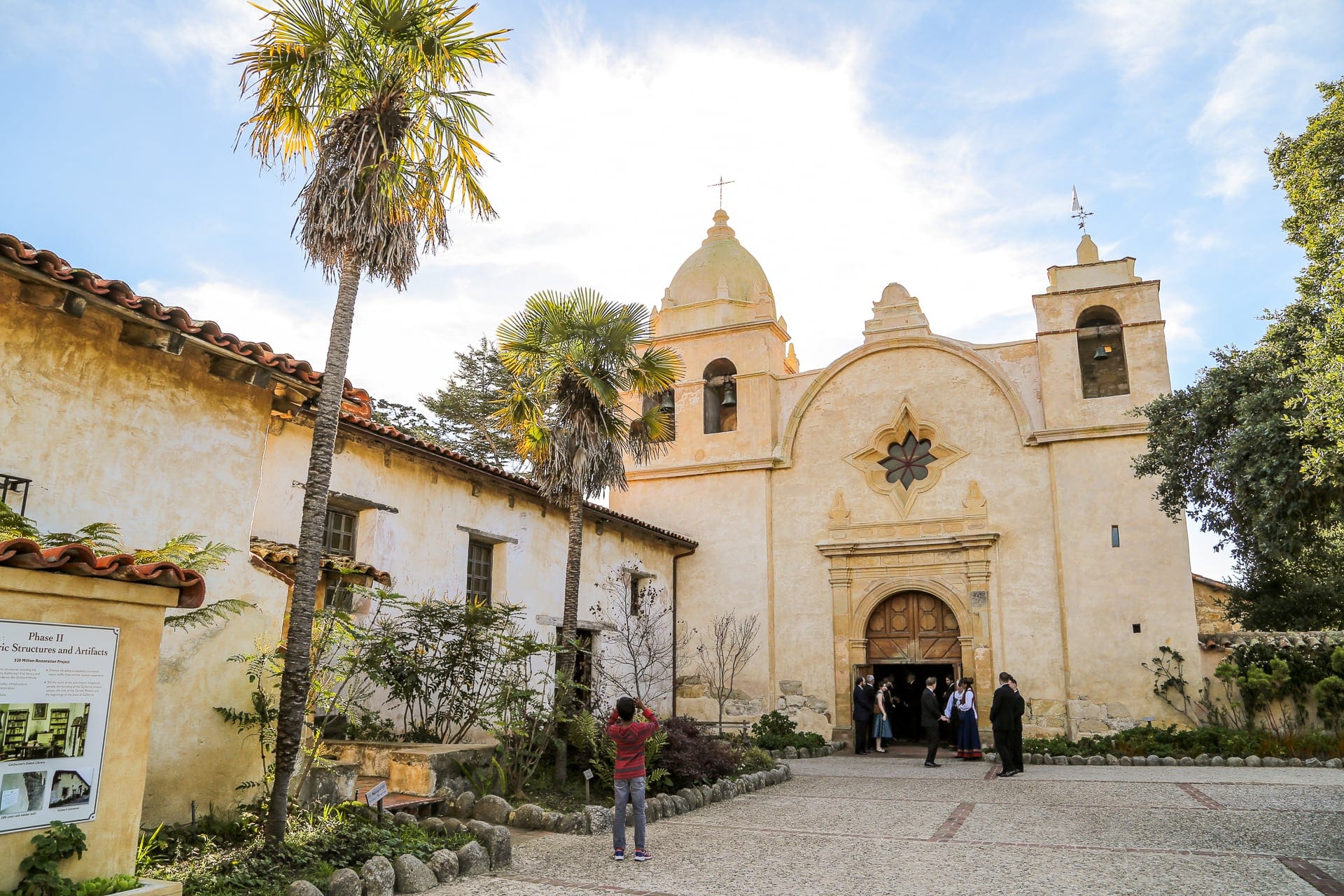A Journey Through Time: Exploring California’s Spanish Missions
California’s 21 Spanish Missions, stretching like pearls along the El Camino Real, offer a captivating journey through time. These architectural marvels, built largely between 1769 and 1833, whisper tales of colonization, conversion, and cultural exchange, revealing a complex and often contested chapter in California’s history. [https://www.lolaapp.com/camel-click-menthol] [https://www.lolaapp.com/becacash]
The Missions: A Historical Overview
Spanish Colonization and the Mission System
The California Mission system arose from Spain’s ambition to expand its New World empire and counter the growing influence of other European powers, particularly Russia and Great Britain, in North America. Beginning with Spanish claims in 1542, but delayed by practical considerations, occupation didn’t truly commence until the late 18th century. The missions, strategically placed along the coast, served as outposts of Spanish authority and centers for the conversion of indigenous populations to Catholicism. This period, marked by a complex interplay of religious zeal, economic exploitation, and cultural imposition, continues to be a subject of historical scrutiny.
Father Junípero Serra, a key figure in the mission system’s development, remains a controversial figure. While celebrated by some for his piety and dedication, others criticize his role in the suppression of indigenous cultures and the often harsh conditions imposed upon Native American communities within the mission system. Ongoing research continues to re-evaluate Serra’s legacy and the broader impact of the mission era.
Mission Life: A Blend of Cultures
Daily life within the mission system was a blend of Spanish and Native American traditions, often existing in a state of tension. The Franciscans introduced European agricultural practices, livestock, and crafts, transforming the California landscape and the traditional lifeways of the indigenous people. While some embraced aspects of the new religion and lifestyle, many others faced immense hardship, including forced labor, separation from families, and the suppression of their cultural practices. Archaeological evidence and historical accounts suggest varying degrees of autonomy and resistance within the mission communities, painting a picture far more nuanced than simple narratives of conversion or oppression.
Decline and Lasting Impact: Secularization and Beyond
By the early 19th century, a confluence of factors, including secularization (the transfer of mission properties from religious to civil control), disease, and internal conflicts, contributed to the decline of the mission system. The secularization period, beginning in 1833, had a profound impact on the missions, leading to the redistribution of land, the displacement of indigenous communities, and the deterioration of many mission buildings.
Despite their decline, the missions left an indelible mark on California. Their architectural style, blending Spanish and indigenous influences, continues to inspire, and their historical significance resonates in contemporary California society. The missions stand as enduring symbols of a pivotal era, prompting ongoing reflection on the complexities of colonization, conversion, and cultural exchange.
The 21 Missions: A Virtual Tour (South to North)
The missions, connected by the historic El Camino Real (“The Royal Road”), offer a unique opportunity to trace the footsteps of the Franciscans and explore the diverse landscapes of California. The table below provides a glimpse into each mission, highlighting key features and inviting further exploration. For those planning a road trip, following the El Camino Real provides a scenic and historically rich experience. [Remember to check individual mission websites for current hours and admission fees.]
| Mission Name | Founding Date | Location | Distinguishing Features | Present-Day Status |
|---|---|---|---|---|
| Mission San Diego de Alcalá | 1769 | San Diego | The first mission, marking the beginning of the chain. Known for its restored church and beautiful gardens. | Active Parish, Museum |
| Mission San Luis Rey de Francia | 1798 | Oceanside | Known as the “King of the Missions” for its impressive size and influence. Features a large quadrangle and intricate architectural details. | Active Parish, Museum, Retreat Center |
| Mission San Juan Capistrano | 1776 | San Juan Capistrano | Famous for the swallows that traditionally return each year, although their migration patterns have become less predictable. Offers a glimpse into mission life and industrial activities. | Museum, Historical Site |
| … | … | … | … | … |
| Mission San Francisco Solano | 1823 | Sonoma | The last mission founded, marking the northernmost reach of Spanish influence. | State Historic Park |
Photography Tip: Early morning or late afternoon light often provides the best conditions for capturing the beauty of the missions. Consider using a polarizing filter to reduce glare and enhance colors. (Source: How to Photograph California’s Missions)
Planning Your Mission Adventure
El Camino Real: A Road Through History
Traveling the El Camino Real is like following a thread through time, connecting you to the people and events that shaped California. Whether you choose to visit a few missions or embark on a comprehensive road trip, the experience promises historical insights and stunning scenery.
Road Trip Essentials: Maps, Routes, and Resources
Numerous resources are available to help you plan your mission adventure. Interactive maps, online guides, and travel blogs offer suggested itineraries, transportation options, lodging recommendations, and budgeting advice. Remember to consider the time of year and plan accordingly, as California’s diverse climate can impact your experience.
Beyond the Walls: Engaging with the Missions
While touring the mission grounds is essential, consider enriching your experience by engaging with the missions in other ways. Attending mass, participating in cultural events, exploring nearby historical sites, or delving into local archives can provide deeper insights into the missions’ history and legacy.
The Missions and Native American Heritage: A Complex Legacy
The California Missions represent a complex and often painful chapter in the history of California’s Native American communities. While the missions played a role in introducing new technologies and agricultural practices, they also led to the displacement of indigenous peoples, the suppression of their cultures, and significant loss of life due to disease and forced labor.
Ongoing research, including archaeological excavations and the study of primary sources, continues to shed light on the experiences of Native Americans within the mission system. It’s crucial to acknowledge the diverse perspectives and interpretations of this historical period and to recognize the lasting impact of the missions on California’s indigenous communities. [This section could be further enriched by incorporating specific examples of indigenous voices and perspectives.]
Preserving the Past: Conservation and Restoration
The preservation of California’s missions is an ongoing effort involving various organizations, including the California Missions Foundation, state parks, and local communities. These groups work tirelessly to restore and maintain the missions, ensuring that these historical treasures are accessible to future generations. The ongoing work presents unique challenges, balancing the needs of preservation with the demands of tourism and the complexities of interpreting a contested past.
The Missions Today: Cultural Significance and Modern Relevance
The California missions continue to hold significant cultural relevance in contemporary California. They are popular tourist destinations, contributing to the state’s economy and serving as educational resources for learners of all ages. The missions also play a role in ongoing dialogues about cultural heritage, social justice, and the relationship between past and present. [Further exploration of how the missions’ history connects to contemporary issues facing California’s diverse communities could enhance this section.]
By exploring the California Missions, we gain a deeper understanding of California’s rich and multifaceted history. These architectural marvels, standing as silent witnesses to a bygone era, invite us to reflect on the enduring legacy of colonization, conversion, and the complex interplay of cultures that have shaped the Golden State.
- Unraveling Einstein’s Legacy: Who Inherited His Genius? - July 14, 2025
- Unlock Einstein’s Family Tree: Bernhard Caesar & Untold Stories - July 14, 2025
- Unveiling Bernhard Caesar Einstein: His Life & Albert Einstein’s Legacy - July 14, 2025
















